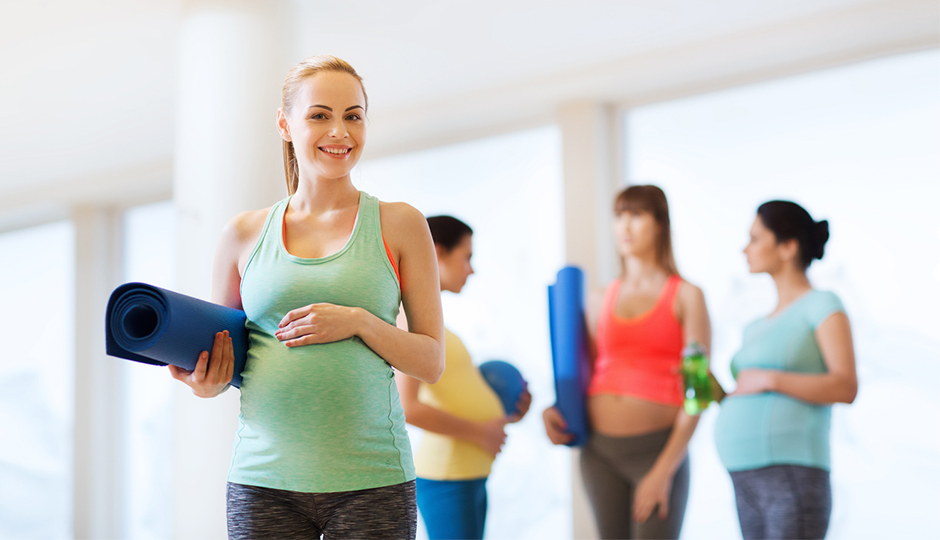Why Women Should Exercise During Pregnancy
Staying healthy during pregnancy is important for both mother and baby. Women know not to smoke, drink alcohol, or consume junk food or caffeine. Questions arise when it comes to exercise during pregnancy – should you, or shouldn’t you? Well, the answer is “yes, you should.”
The ACOG (American Congress of Obstetric and Gynecology) recommends that all women with low-risk pregnancies participate in aerobic and strength-conditioning exercise before, during and after pregnancy. Board certified women’s health nurse practitioner Corinne Prigo says, “Most women will have to modify their routines as the pregnancy progresses, due to normal anatomic changes and the ever-changing needs of their baby.” That doesn’t mean you need to give it up altogether!
Exercise is considered to be safe during all three trimesters of pregnancy, although many women adjust their routines based on how they feel. Walking offers a great way to stay active during pregnancy. There’s no cost, it’s easy and it gets a women outdoors. Engaging in many other forms of exercise can also be helpful to expectant mothers. Swimming is ideal because of its cardiovascular benefits while easing back and joint pain — common complaints during pregnancy. In addition, “Exercise has a significant psychological benefit: helping to improve self image and reduce depression symptoms,” Prigo says.
Pregnant women who regularly ran, lifted weights, and practiced HIIT (high intensity interval training) before they became pregnant do not have to give up these forms of exercise. However, they probably will want to lessen their intensity. Prigo advises avoiding contact sports such as soccer and basketball, activities that might risk a bad fall (biking and skiing), and hot yoga.
Prigo, who works at Tufts Medical Center, is also a certified prenatal yoga instructor. Prigo says, “Most of my patients focus more on low impact yoga and pilates toward the end of their pregnancy rather than high intensity training or running.” Yoga encourages stretching and strengthening, and can ease carpal tunnel syndrome, headaches, shortness of breath, nausea and indigestion. Prigo continues, “It feels more comfortable when you are bigger, have to pee all of the time and are tired.”
Women with high-risk pregnancies can also benefit from some types of exercise — as long as their obstetricians approve it. “I lead a very gentle yoga class focused on linking breath with movement for our hospitalized obstetric patients,” Prigo says. When a woman exercises, she keeps excessive weight gain at bay and reduces her chances of developing gestational diabetes. Additionally, it may lessen the chance of preeclampsia, a serious complication characterized by hypertension. Doctors at Tufts Medical Center are currently conducting research on exercise in high-risk pregnancies. “We are hoping to track the physical and emotional benefits of yoga as the study develops,” Prigo says.
When women have exercised throughout pregnancy, they could possibly have easier deliveries. “[Yoga’s] focus on breath and mindfulness can help the aches and pains of pregnancy, as well as improve mood and even help with the delivery,” Prigo says. It strengthens the pelvic floor and lower back and abdominal muscles that can help prepare a woman for delivery.
Pregnancy is an exciting time in a woman’s life, but she needn’t feel restricted. “Women shouldn’t feel that they suddenly can’t do the activities that make them feel good,” Prigo says. What’s good for the mom is good for the baby.
This is a paid partnership between Tufts Medical Center and Boston Magazine



